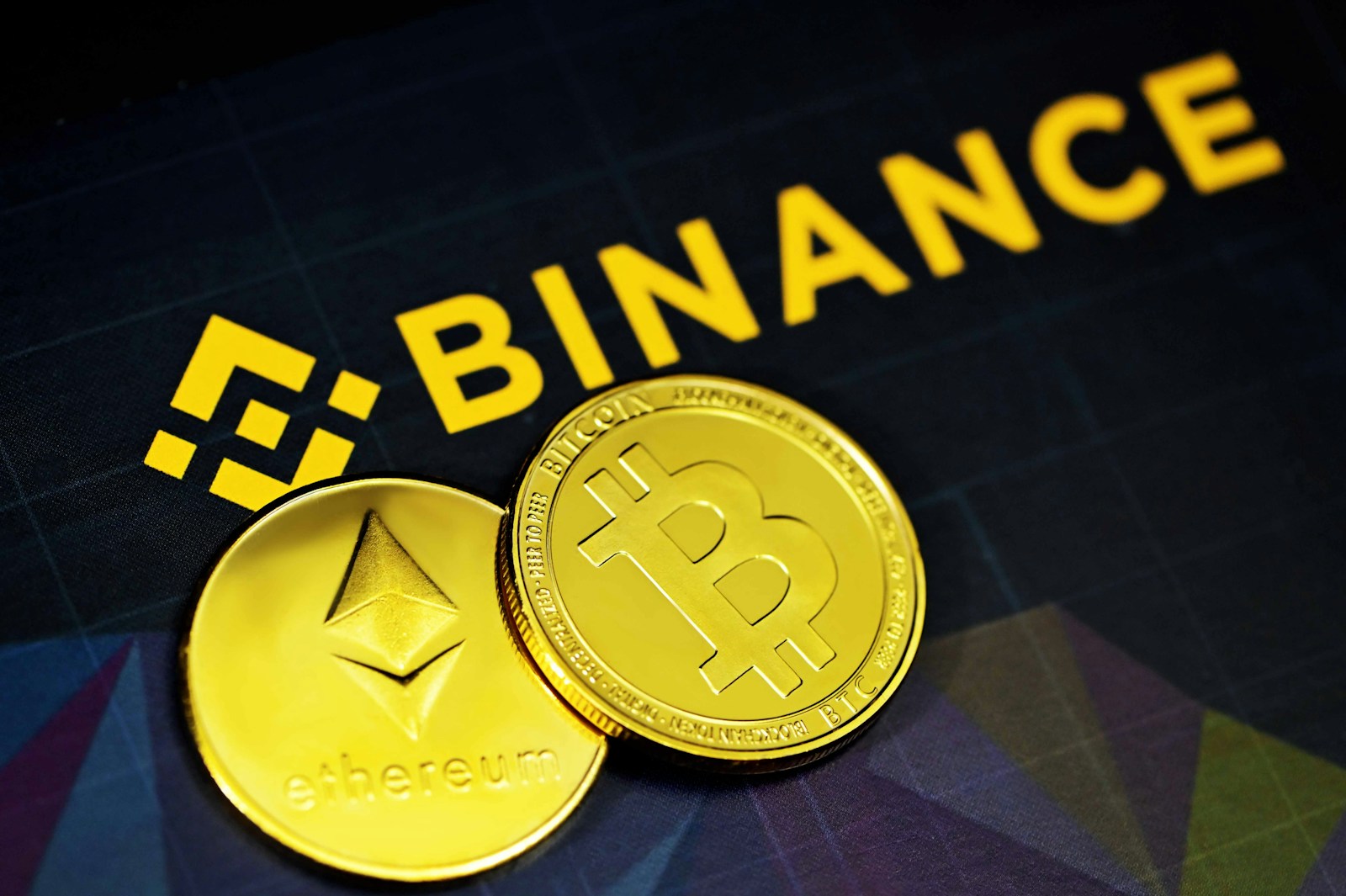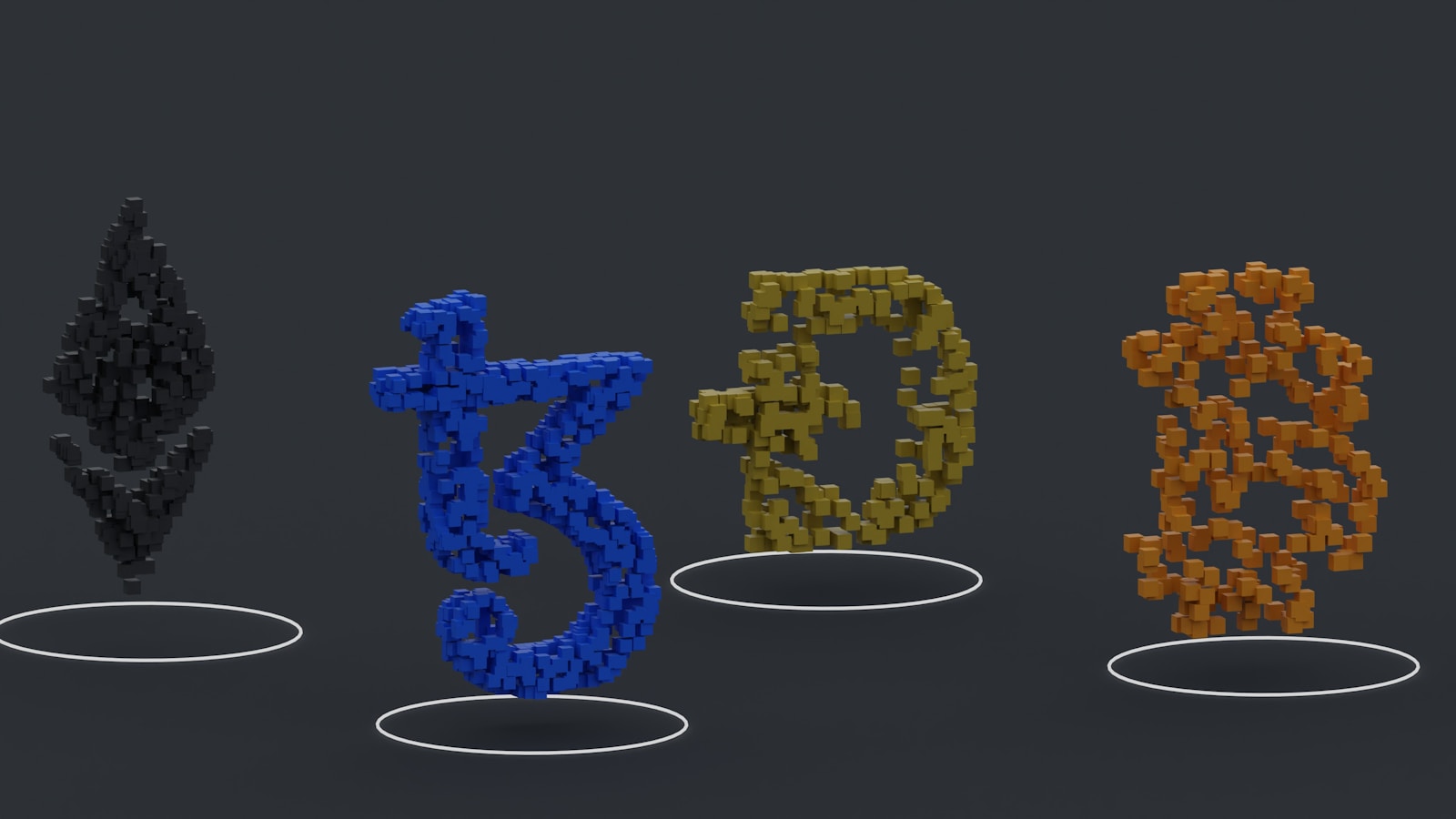
The failure of the TerraUSD protocol exposed critical vulnerabilities in the design of non-collateralized digital currencies. Within days of the initial market shock in May 2022, the pegged token lost its dollar parity, triggering a rapid and uncontrollable death spiral. At its peak, the native token Luna had a market capitalization exceeding $40 billion, yet it plummeted to near-zero levels as confidence evaporated. This event demonstrated how tightly coupled supply mechanisms and price anchors can amplify systemic risk rather than mitigate it.
What went wrong was not merely a market correction but a structural flaw in the stabilization method employed by this crypto project. Unlike traditional fiat-backed coins, this ecosystem depended on an algorithmic mint-and-burn system between two tokens to maintain its peg. The depegging initiated when massive withdrawals stressed liquidity pools, forcing an expansion of token supply that overwhelmed demand. Investors rapidly exited positions, causing cascading losses across multiple platforms reliant on these assets for yield farming and lending.
This scenario offers vital lessons on managing trustless financial instruments within decentralized frameworks. While algorithm-driven protocols aim to reduce reliance on collateral reserves, they introduce feedback loops vulnerable to speculative attacks and black swan events. Current market volatility underscores the necessity for robust reserve backstops or hybrid models combining algorithmic controls with tangible asset support to prevent similar breakdowns. How can future projects balance innovation with resilience?
Terra Luna: Algorithmic Stablecoin Ecosystem Collapse
The failure of the UST token’s peg to the US dollar triggered a rapid loss of confidence that led to an unprecedented market disruption. Once the depeg event began in May 2022, UST fell below $0.20 within days, undermining its primary function as a reliable digital asset for value storage. This instability forced massive sell-offs and liquidity crises, severely impacting luna’s valuation, which plummeted from over $80 to fractions of a cent in less than two weeks.
Maintaining the UST peg relied heavily on an arbitrage mechanism involving luna minting and burning. When UST traded below $1, users could burn UST to mint luna at a fixed rate, theoretically incentivizing price correction. However, intense downward pressure overwhelmed this feedback loop. The mint-and-burn protocol could not counterbalance the volume of redemptions and panic selling, resulting in an uncontrollable supply expansion of luna that accelerated its collapse.
Mechanics Behind the Protocol Breakdown
The core design hinged on algorithmic adjustments without collateral backing, exposing systemic vulnerabilities during market stress. Unlike fiat-backed stablecoins with reserves or crypto-collateralized models requiring over-collateralization, UST’s stability depended purely on market incentives and arbitrage opportunities. Once confidence faltered, arbitrageurs exploited the disparity by converting vast amounts of UST into luna, inflating its supply exponentially–exceeding 6 billion tokens minted within days–causing hyperinflation and accelerating price depreciation.
The interdependence between luna and UST created a feedback loop that magnified losses rather than mitigating them. As luna’s price collapsed below key psychological thresholds ($10, $1), it no longer served as effective collateral or incentive for restoring the peg. This loss of utility led to cascading liquidations across DeFi platforms relying on these assets for lending and yield generation, amplifying systemic risk beyond just their native blockchain.
Examining comparative cases such as DAI or USDT reveals stark contrasts in resilience under stress scenarios. For instance, DAI employs over-collateralization with multiple asset types and governance mechanisms adjusting parameters dynamically to maintain stability. Meanwhile, USDT maintains fiat reserves audited periodically to ensure redemption capability. The absence of such safeguards made UST uniquely susceptible to speculative attacks and market panic.
Recent developments indicate ongoing attempts at ecosystem revival through rebranding efforts and new tokenomics proposals aiming to decouple luna from previous failure points. However, caution remains warranted given prior structural flaws exposed during extreme volatility conditions exceeding typical risk models. Investors should carefully evaluate liquidity risks and underlying protocol incentives before engaging with any derivatives or forks emerging from this disrupted infrastructure.
Mechanics Behind Terra UST Peg
The peg of UST to the US dollar was maintained through a mint-and-burn mechanism involving luna tokens. When the price of UST deviated from $1, arbitrageurs could exchange one asset for the other at a guaranteed rate, incentivizing market participants to restore parity. Specifically, if UST traded above $1, users could burn luna to mint new UST and sell it on the market, increasing supply and pushing the price down. Conversely, if UST dropped below $1, holders could burn UST to mint luna, reducing stablecoin supply and theoretically driving its price back up.
This approach relied heavily on incentives within the network’s monetary policy and market confidence in luna’s value as a balancing asset. The system assumed sufficient demand for luna so that burning UST would not excessively dilute its value. However, volatility in luna’s price directly affected the protocol’s ability to defend the peg. During periods of intense selling pressure, luna’s market cap contracted rapidly, undermining its stabilizing role and creating a feedback loop that exacerbated price instability.
Algorithmic Stabilization via Dual Token Dynamics
The underlying stabilization mechanism was an algorithmic arbitrage model based on elastic supply adjustment between two native tokens. This design eliminated collateral backing traditionally required by fiat-pegged assets but introduced new risks tied to luna’s valuation swings. For example, when UST started losing its peg in May 2022, massive redemptions increased luna minting exponentially–surpassing billions of dollars in output–which overwhelmed market absorption capacity and caused hyperinflationary dynamics.
Moreover, the protocol’s reliance on market participants’ rational behavior meant that panic or loss of trust could trigger rapid de-peg events. Unlike conventional collateralized designs where reserves can be drawn upon during stress scenarios, this structure depended entirely on tokenomics equilibrium. Once confidence faltered and liquidity dried up across decentralized exchanges and lending platforms supporting these assets, restoring parity became practically infeasible without external intervention.
- Example: Over 24 hours in May 2022, over $4 billion worth of luna were minted amid attempts to stabilize UST.
- Result: Luna’s price plummeted from over $80 to fractions of a cent within days.
- Impact: Market capitalization collapsed from tens of billions to under $100 million.
This cascade effect revealed vulnerabilities inherent in purely synthetic pegging methods without robust collateral frameworks or circuit breakers against mass redemptions. It also raised critical questions about sustainability under extreme market stress conditions where speculative runs cause spiraling token inflation rather than correction.
In sum, the peg maintenance mechanics operated on continuous token swaps governed by smart contracts enforcing mint-and-burn rules tied closely to market prices. While innovative in theory and initially effective during stable conditions, exposure to sharp liquidity shocks quickly eroded their efficacy. Future designs might incorporate hybrid models combining partial reserve backing with dynamic supply adjustments to mitigate such systemic weaknesses observed here.
Role of LUNA Token Burn
The mechanism of burning LUNA tokens was integral to maintaining the peg of UST, the decentralized stablecoin designed to hold a 1:1 value with the US dollar. By allowing users to exchange 1 UST for $1 worth of LUNA and vice versa, the system aimed to regulate supply dynamically. When UST price dropped below $1 (depeg event), holders were incentivized to burn UST in exchange for newly minted LUNA, reducing UST supply and restoring its peg. This arbitrage opportunity was intended as a self-correcting loop; however, it depended heavily on market confidence and liquidity depth.
During the critical failure phase in May 2022, this token burn mechanism failed to stabilize the currency’s value amid massive sell-offs. The depeg triggered a disproportionate minting of LUNA as users rushed to swap their depreciating UST, inflating LUNA’s supply exponentially. Instead of creating equilibrium, this led to hyperinflationary pressure on LUNA itself, causing its price to plummet from over $80 to fractions of a cent within days. The inability to effectively balance these opposing forces accelerated systemic instability and eventual breakdown.
Technical Dynamics and Market Impact
The token burn process was directly tied to the protocol’s algorithmic design which sought equilibrium through supply adjustments rather than collateral backing. In practice, when large volumes of UST were burned for LUNA during rapid outflows, new tokens flooded the market faster than demand could absorb them. This imbalance revealed vulnerabilities in liquidity pools and oracle data feeds that failed to reflect real-time volatility adequately. For example, on May 9th 2022, nearly 6 billion new LUNA coins were minted within hours while UST’s market cap shrank dramatically – an unsustainable dynamic that precipitated further loss of investor trust.
Comparatively, traditional fiat-backed stablecoins rely on tangible reserves or algorithmic hybrids with collateral buffers providing fallback security during stress events. The pure reliance on token burn/redemption cycles exposed limitations under extreme market conditions where panic selling broke feedback loops meant for stability. Current analyses suggest that integrating multi-asset collateralization or adjustable redemption rates might mitigate such risks better than fixed-rate burns alone. Ultimately, evaluating these lessons is key for future projects aiming at resilient decentralized monetary systems under unpredictable market pressures.
Impact on DeFi Protocols
The destabilization of the UST token and its subsequent depeg critically undermined numerous decentralized finance platforms that integrated this asset into their liquidity pools and collateral frameworks. Once UST lost its peg, protocols relying heavily on it faced immediate liquidity shortfalls and sharp valuation drops, triggering forced liquidations across lending platforms. For instance, Anchor Protocol experienced a drastic reduction in yield sustainability due to the declining value of deposited assets pegged to UST, leading to borrower insolvencies and systemic stress within its ecosystem.
Besides direct exposure to the devalued token, many yield farming strategies collapsed as incentives became unsustainable. The intertwined nature of the native coin LUNA with UST meant that as the stablecoin’s value dropped, so did LUNA’s market capitalization, amplifying losses for stakers and liquidity providers. This cascade effect propagated through automated market makers (AMMs) like Curve and Uniswap forks that had significant UST or LUNA pairs, resulting in heightened impermanent loss risks and withdrawal freezes during peak volatility.
Technical Consequences for Lending Platforms
Lending protocols depending on algorithmic collateral models were particularly vulnerable. With UST losing its peg below $0.20 at one point, risk parameters embedded in smart contracts failed to adjust quickly enough, causing rapid liquidation triggers. The over-collateralized loans backed by LUNA tokens plummeted in value simultaneously with UST’s decline, eroding borrower equity and increasing bad debt ratios drastically. Protocols such as Cream Finance saw increased default rates that stressed governance decisions around loan-to-value (LTV) limits and emergency shutdown mechanisms.
The design flaw emerged from assumptions about automatic rebalancing between two interconnected tokens under normal market conditions; however, during extreme stress events these assumptions broke down entirely. Attempts to stabilize prices through minting or burning mechanisms accelerated token supply inflation instead of restoring confidence. This problem highlights the importance of adaptive risk management tools capable of responding dynamically to severe price dislocations within DeFi credit systems.
- Case Study: Mirror Protocol’s synthetic asset minting suffered due to reliance on Terra-derived collateral valuations; its mAssets experienced sharp premiums before crashing alongside native tokens.
- Example: Kava’s diversified collateral approach showed relative resilience by avoiding over-concentration in affected coins but still faced contagion effects indirectly via cross-protocol liquidity pools.
The contagion extended beyond isolated ecosystems because many protocols used wrapped versions of affected tokens or engaged in cross-chain bridges incorporating them as part of multi-asset portfolios. These integrations propagated price shocks into broader DeFi markets on Ethereum and Binance Smart Chain networks, disrupting arbitrage operations and causing temporary spikes in gas fees due to frantic rebalancing transactions. Observing these dynamics underscores how structural dependencies can amplify localized failures across interoperable financial layers.
In conclusion, the failure demonstrated critical vulnerabilities inherent in pegged token designs when exposed to coordinated market pressure and speculative attacks. It emphasized an urgent need for enhanced transparency regarding reserve backings and more conservative protocol parameterizations for collateral acceptance criteria within DeFi infrastructure. Future projects must focus on robustness against systemic feedback loops created by tightly coupled dual-token mechanisms while prioritizing diverse collateral portfolios resistant to single-point failures.
Market Reaction and Liquidity Crisis
The rapid devaluation of luna and the destabilization of ust triggered immediate turmoil across cryptocurrency markets, sparking a liquidity crunch that reverberated beyond the native network. As the peg of ust broke, investors rushed to exit positions, causing mass sell-offs that drained available liquidity pools on decentralized exchanges supporting these tokens. The swift erosion in confidence led to cascading margin calls and forced liquidations on leveraged platforms, amplifying price volatility and accelerating the downward spiral.
This liquidity shock exposed fundamental vulnerabilities in the system’s design, where terra’s native coin was intrinsically linked to ust’s value through mint-and-burn mechanisms. When market participants lost faith in maintaining the peg, luna’s supply inflations intended to absorb ust redemptions overwhelmed demand, flooding exchanges with excess tokens. Consequently, bid-ask spreads widened dramatically; for instance, Luna/USD slippage increased from an average of 0.5% pre-crisis to over 15% within days.
Systemic Impact on Trading Venues and Derivatives
Major centralized exchanges such as Binance and Coinbase experienced abnormal trading volumes for luna-based pairs, leading to operational challenges including delayed order executions and heightened risk management alerts. On-chain analytics reveal that decentralized platforms like Curve Finance saw significant depletion of stablecoin reserves as users attempted mass withdrawals or swaps. Simultaneously, perpetual futures markets faced unprecedented funding rate spikes – reaching over 50% annualized at peak stress – reflecting acute market imbalances.
Liquidity providers suffered sharp impermanent losses due to extreme price divergence between luna and other collateral assets. This disincentivized capital provision precisely when it was most needed, exacerbating depth shortages. Additionally, cross-chain bridges encountered congestion as holders sought to transfer assets out rapidly; Terra Bridge reported transaction backlogs exceeding 10x normal levels during critical hours.
Comparative Case Study: Contrast With Previous Stablecoin Events
Unlike earlier incidents involving fiat-collateralized coins such as USDT or USDC–where centralized reserves provided a buffer–the failure within this algorithmically stabilized protocol lacked tangible asset backing capable of absorbing redemption pressure. Historical data shows that during Tether’s minor de-pegging episodes in 2017-18, market makers intervened effectively by deploying reserves or arbitrage strategies. In contrast, luna’s mechanism depended solely on token economics without external guarantees.
- The absence of sufficient liquidity reserves left market actors vulnerable to feedback loops between declining prices and panic-driven sales.
- The monetary policy embedded in minting and burning operations failed under stress scenarios with rapid outflows exceeding replenishment capacity.
- Investor behavior amplified risks through coordinated exits rather than isolated trades typical in previous disruptions.
This case underscores limitations inherent in trust-minimized designs when subjected to systemic shocks lacking fallback layers common in traditional finance or collateralized crypto projects.
Failures in Governance Models
Effective governance frameworks are critical to maintaining the stability and resilience of digital asset networks, especially those relying on complex monetary mechanisms. The recent disintegration of a prominent algorithm-driven coin system exposed significant weaknesses in its governance structure, which failed to prevent or mitigate the rapid loss of peg between its native token and fiat value. A core issue was the overreliance on automated protocols without sufficient human oversight or adaptive contingency planning, leading to delayed responses amid escalating market pressures.
The destabilization began when the native token experienced severe selling pressure, triggering a feedback loop that eroded confidence across the entire platform. Decision-making processes lacked transparency and timeliness, as key stakeholders struggled to coordinate effective interventions. Notably, attempts to restore price stability by minting additional tokens exacerbated inflationary effects, accelerating the disconnection from the intended valuation baseline. Such outcomes underscore how governance models must balance algorithmic mechanics with robust human judgment and dynamic risk management tools.
Structural Weaknesses Amplifying Systemic Risk
The failure of this particular network highlights several structural flaws inherent in its governance design. First, token holders possessed disproportionate influence but insufficient incentives aligned with long-term network health. This misalignment allowed speculative behaviors to dominate voting patterns, undermining collective decision-making integrity. Additionally, emergency protocols were either inadequately defined or lacked enforceability under extreme conditions, leaving no clear pathway for crisis resolution once devaluation accelerated.
- Lack of decentralized control: Centralized entities retained hidden veto power despite claims of distributed governance.
- Insufficient stress testing: Simulations failed to account for simultaneous liquidity shocks paired with negative sentiment spirals.
- Inadequate communication channels: Fragmented updates led to misinformation and panic among participants.
The combined effect reduced stakeholder trust just as market volatility peaked–an environment demanding decisive yet coordinated responses that never materialized effectively.
An instructive comparison can be drawn with other programmable monetary systems that integrate multi-layered governance involving both algorithmic safeguards and human arbiters empowered with predefined escalation rights. These hybrid frameworks demonstrate increased resilience by enabling swift protocol adjustments before market forces completely unravel peg stability. For instance, projects employing time-locked treasury controls alongside real-time oracle feeds have shown better capacity to counteract sudden capital flight events while preserving investor confidence.
The catastrophic decoupling event demonstrated how fragile ecosystems become when foundational governance principles are neglected or poorly implemented. Market data from Q1 2022 revealed that within days following initial peg deviation signals, the primary token’s value plummeted by over 99%, while its paired currency lost virtually all liquidity support on major exchanges. This collapse not only wiped out billions in market capitalization but also triggered widespread contagion effects across correlated assets relying on similar stabilization mechanisms.
Moving forward, it is imperative for developers and community leaders overseeing such platforms to embed adaptive governance layers capable of preemptive action rather than reactive patchwork solutions post-crisis. Incorporating real-time analytics coupled with diverse stakeholder input can enhance situational awareness and facilitate more agile policy shifts under duress. Without these reforms, future projects risk repeating identical pitfalls–undermining public trust and overall viability within an increasingly competitive decentralized finance landscape.
Lessons for Algorithmic Stablecoins
Immediate priority must be enhancing resilience mechanisms to prevent a repeat of the UST depeg incident, where an overreliance on native token burning failed to maintain parity. The Terra network’s approach demonstrated that purely market-driven arbitrage without robust collateral backing introduces systemic vulnerabilities. Empirical data shows that UST’s peg lost stability when its market cap exceeded $18 billion, while LUNA’s price volatility amplified the feedback loop, accelerating failure.
Future designs should integrate multi-layered stabilization protocols combining partial reserves with dynamic supply controls. For example, introducing cross-chain liquidity pools or algorithmically adjusted collateral ratios could mitigate sharp sell-offs. Projects like Frax and OlympusDAO offer alternative frameworks by blending algorithmic incentives with real asset backing, reducing exposure to cascading liquidations witnessed in the Luna-UST episode.
Technical Takeaways and Strategic Implications
- Decoupling native governance tokens from peg maintenance reduces correlation risk; Terra’s model concentrated risk in LUNA’s price swings, undermining confidence during stress events.
- Incorporation of emergency circuit breakers, such as temporary minting freezes or redemption halts, provides critical reaction windows to contain volatility spikes before depegs deepen.
- Diversifying collateral types beyond volatile crypto assets can stabilize supply-demand imbalances; pegging mechanisms relying solely on internal tokens remain fragile against external shocks.
- Transparent oracle systems with rapid update frequencies are essential for accurate pricing feeds; delayed or manipulated data exacerbates mispricing and liquidation cascades.
The broader impact extends beyond individual protocol failures: investor trust in decentralized monetary constructs erodes with every high-profile breakdown. This shifts capital towards hybrid models integrating tangible reserves or algorithm-assisted governance rather than purely synthetic alternatives. Will we see a paradigm where composability between on-chain assets and off-chain fiat guarantees become standard? Possibly yes–especially as regulatory scrutiny intensifies around uncollateralized coins following Terra’s downfall.
In conclusion, the demise of UST and LUNA signals a pivotal inflection point requiring innovation in design robustness and risk management strategies. Technical architects must prioritize systemic safeguards that anticipate extreme market conditions instead of reactive fixes post-depeg. The next generation of stable currencies will likely emerge from lessons learned here – balancing decentralization ideals with pragmatic economic security measures to sustain long-term viability within competitive blockchain environments.








